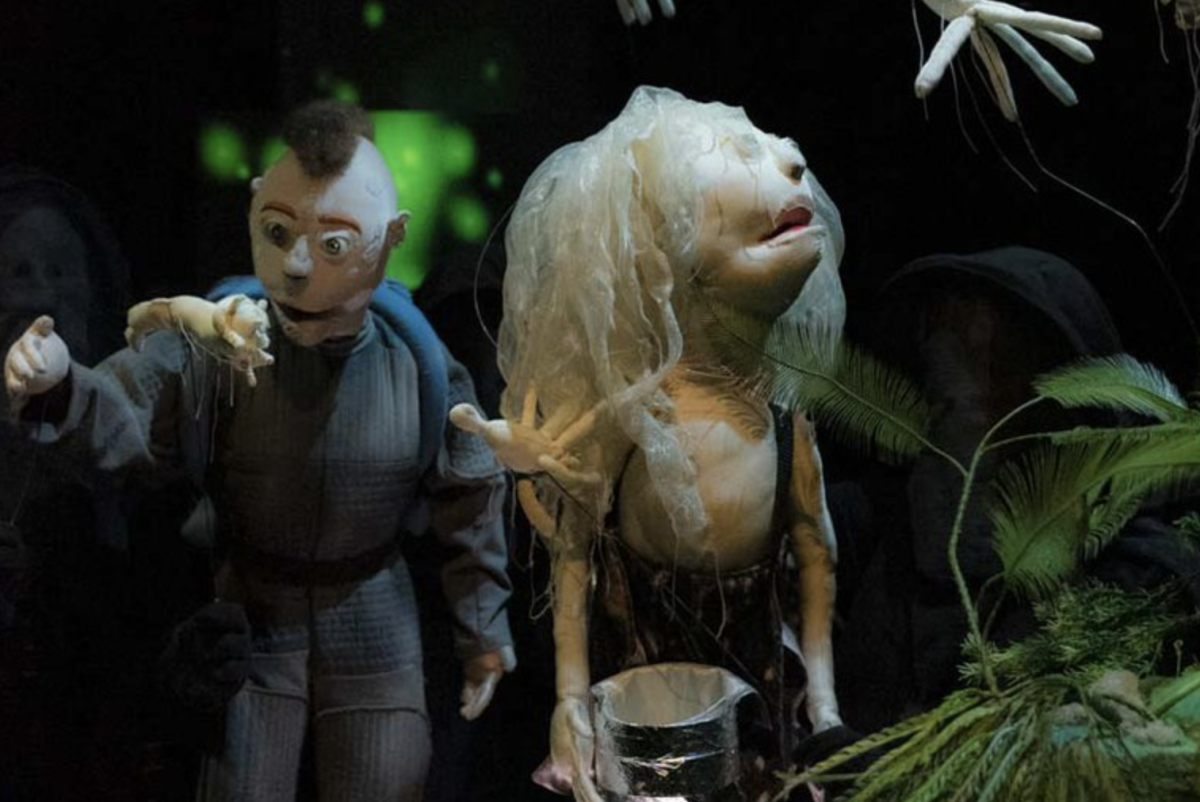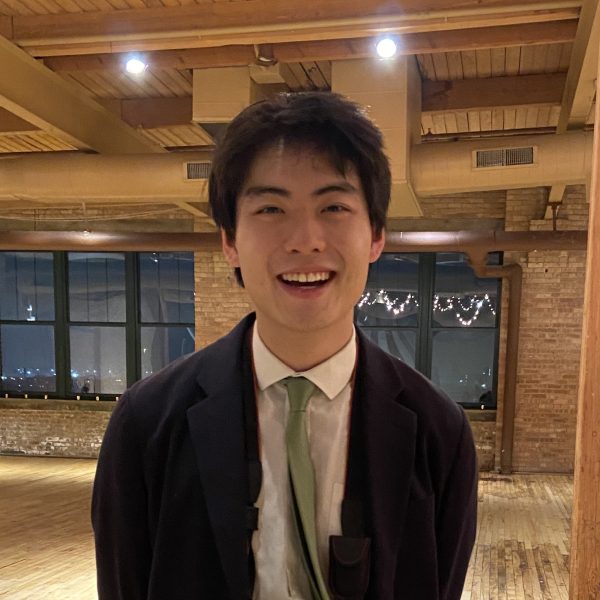A Norwegian man in a red blazer and a fox mask introduces the distant apocalyptic future of Wakka Wakka’s The Immortal Jellyfish Girl. In a war-torn world where humans have evolved into two tribes—the cybernetic Homo technalis and the genetically enhanced Homo animalis—all hope of salvation depends on a jellyfish girl and a radioactive, trash-picking boy.
On January 18, New York City—and Oslo—based theater company Wakka Wakka kicked off the annual Chicago International Puppet Theater Festival with The Immortal Jellyfish Girl, a part of Wakka Wakka’s wider Animalia Trilogy. The Immortal Jellyfish Girl constructs a compelling mythos about mankind’s future for a present where climate disasters and visions of catastrophe threaten our survival as a species.
Aurelia is a jellyfish–tardigrade–bat–naked mole rat hybrid with the ability to sprout life-giving polyps, and Bug is an orphan who works as a trash picker on the outskirts of a technological citadel. Driven by a prophecy and a talking spider, Bug climbs his city’s walls and finds his way into a mutated wilderness, where he is surprised to find organic life. Bug and Aurelia meet and find love and hope—because Bug knows a way to the ocean, where life can blossom again. That is, however, if they do not fall prey to the technalis! A disembodied head and arm (and techno voice) who serves as the technalis’ master intelligence is determined to eliminate all organic life on the planet.
Despite the Disneyesque plotline and comically cartoonish villain, the show pleasantly surprised me with its endearing and genuine interactions between Bug and Aurelia. The two exude a teenage nervousness and awkwardness that makes their relationship feel quite real for a puppet show (as the fourth wall-breaking narrator the Fox reminds us constantly that we’re watching one). In fact, the strongest parts of Wakka Wakka’s The Immortal Jellyfish Girl are the extended sequences where Bug and Aurelia interact with each other without interruption by the Fox. Although comedic, the weaving in and out of a bumbling narrator damaged the suspension of disbelief that the show otherwise worked hard to create.
Above all, the show was beautifully made. Fog and incandescent lighting communicate the scope and gloom of the technalis dystopia. With delightful sound effects, from those that accompany Aurelia’s oval hoverboard to those produced by the hydraulic stilts that Bug uses to traverse the wasteland outside the city, Wakka Wakka brings to life the puppets and the world in which they live.
The Immortal Jellyfish Girl is lighthearted (and likes to make fun of itself) but still delivers a powerful finale when Aurelia transforms into a many-handed bodhisattva, with her body and tentacle hairs aglow. The ending encapsulated a warning but also a message of hope; perhaps Aurelia, whose name means “the dawn,” serves as a premonition that the wild forces of nature will win out in a apocalypse if we are to continue down our path of technological colonization.









